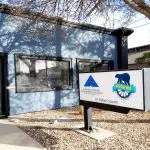
As weather warms, risk of ice dams increases
While the warm weather is welcomed by most, it does come with its share of complications. Melting snow and ice can make roads and sidewalks treacherous, but some of the worst effects can be on the roof of your home.
Ice damming is a risk when warm weather hits following a cold snap, melting snow and ice on top of the roof. During a freeze-thaw cycle, like the one Saskatchewan is about to go through, it becomes a lot more likely.
“Unless that melted snow is able to drain properly, it will re-freeze over time,” said SGI media relations manager Tyler McMurchy. “That creates ice dams. So, throughout the winter if this keeps going, the water will eventually work its way under your shingles and into your attic.”
Water seeping into your attic can cause problems ranging from damaging the walls and ceiling to forming mold and mildew. Since the temperature moves back and forth so much during Saskatchewan winters, there’s always a risk of ice damming on any given year.



